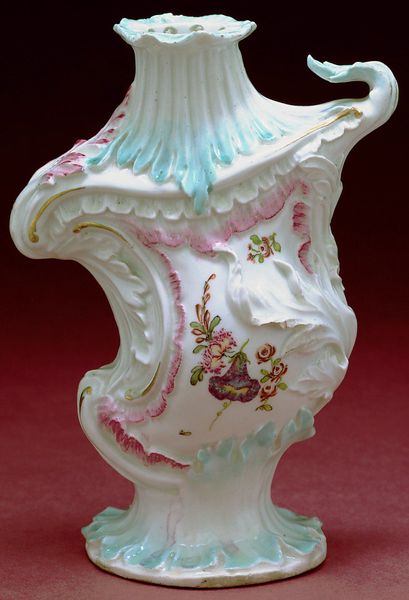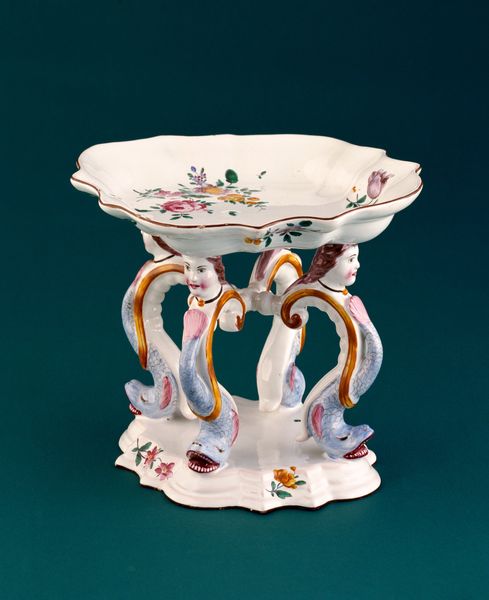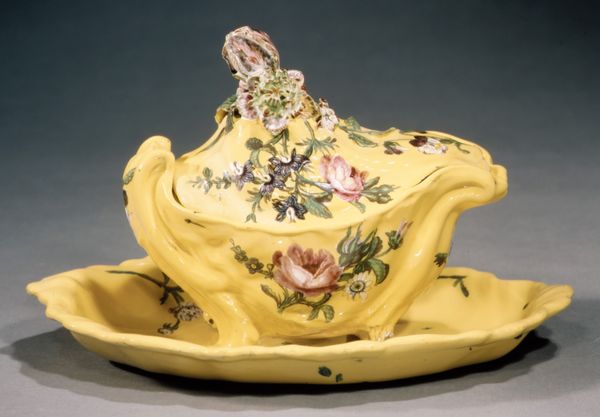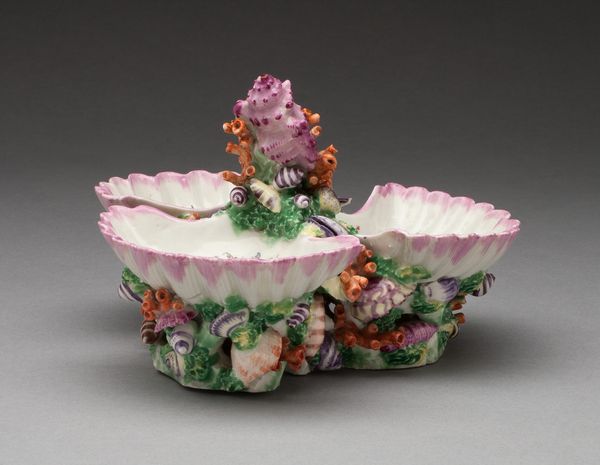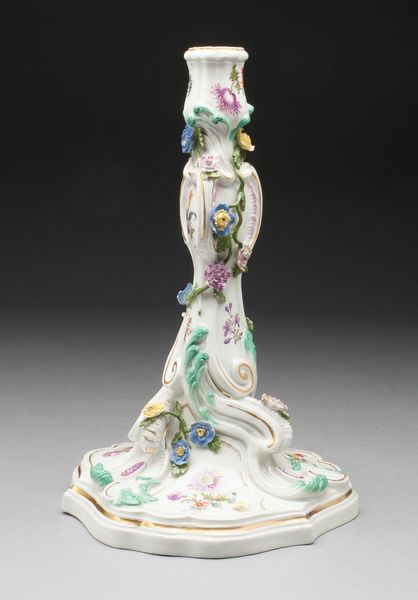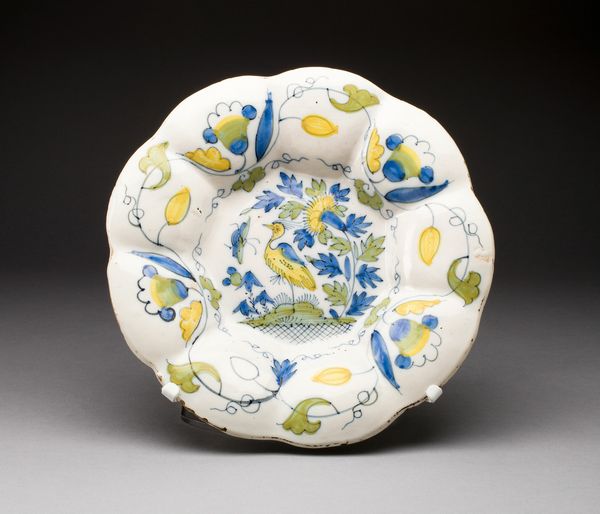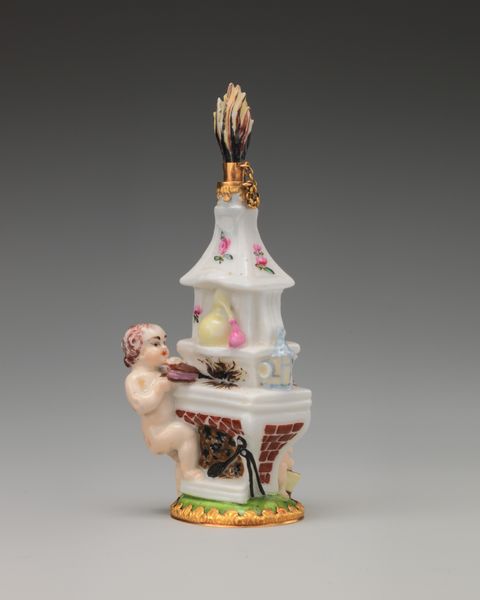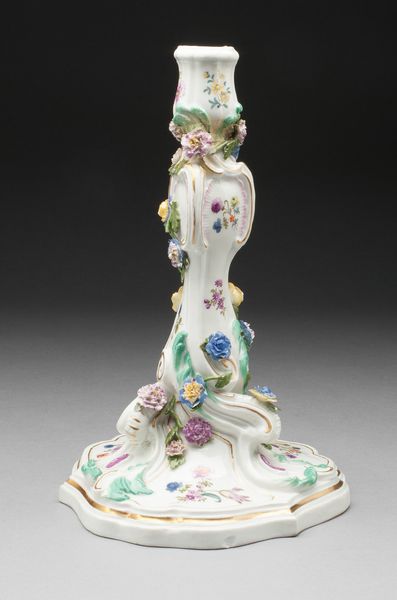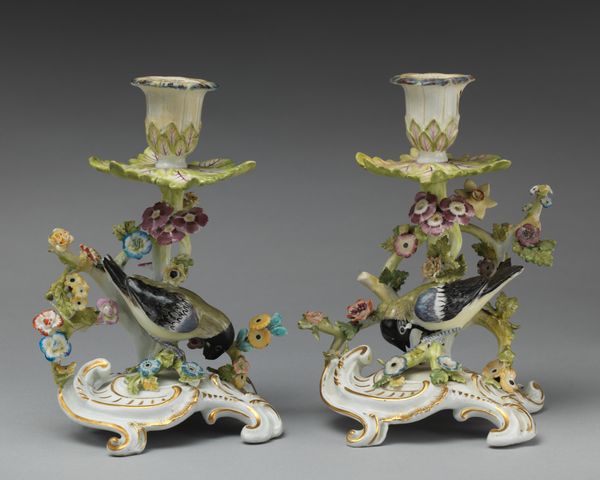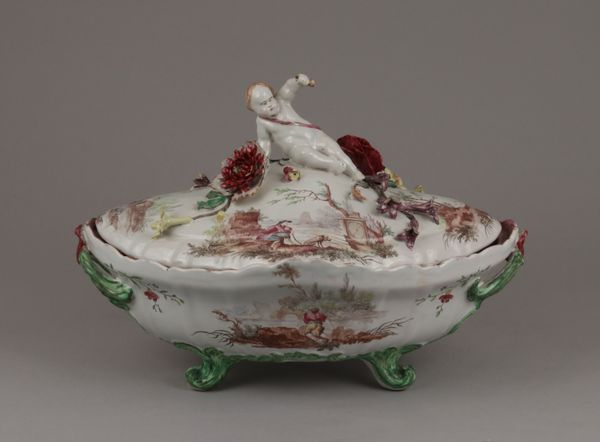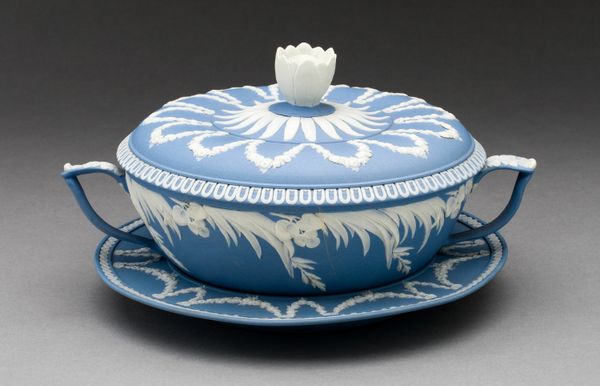
ceramic, porcelain
#
ceramic
#
porcelain
#
decorative-art
#
rococo
Dimensions: H. 8.9 cm (3 1/2 in.)
Copyright: Public Domain
Curator: What an absolutely charming object! Before us is a porcelain sweetmeat dish, crafted around 1770 by the Plymouth Porcelain Factory. The Art Institute of Chicago is lucky to have it. Editor: My initial thought is 'seashell fantasy.' It's so light and playful. The shell form and little floral details, do they speak to a specific tradition? Curator: The Rococo influence is evident, celebrating nature, lightness, and elegance. These sweetmeat dishes would have been luxury items. We have to think about the means of production. The specific materials involved: Cornish china clay and china stone, as the prime ingredients which had only been discovered 20 years prior in 1750 and could only be sourced in England and this allowed England to start production of their own porcelain finally in competition with the chinese hard-paste porcelain and german versions as well. Editor: And a shell form as a luxury is also intriguing, it must evoke distant shores and the exotic natural world as some symbolic indication. Curator: Certainly. Shells were popular motifs at the time, representative of Venus, love, and perhaps abundance. Serving sugary confections, the dish becomes a stage for symbolic meaning. Each carefully made petal and leaf highlights the consumer appetite for beauty and status. Editor: There’s a narrative woven into the porcelain itself – not just the story it depicts. It also highlights the relationship between symbolism and class, doesn’t it? Curator: Precisely! It prompts questions about consumption. Porcelain, though delicate, requires tremendous resources. It's not just decorative; it’s embedded within larger systems of power, manufacture, and trade that are also linked with colonial aspirations. Editor: So, beyond the surface sweetness, it also acts as a visual encapsulation of society. Curator: It is that the sweetness represents the cultural significance and historical background with a great look in the materiality as well as historical context which really changes one’s understanding, doesn't it? Editor: Absolutely. Looking at it as a series of symbols layered within systems of production truly reshapes the encounter with a piece that seemed initially ornamental.
Comments
No comments
Be the first to comment and join the conversation on the ultimate creative platform.
